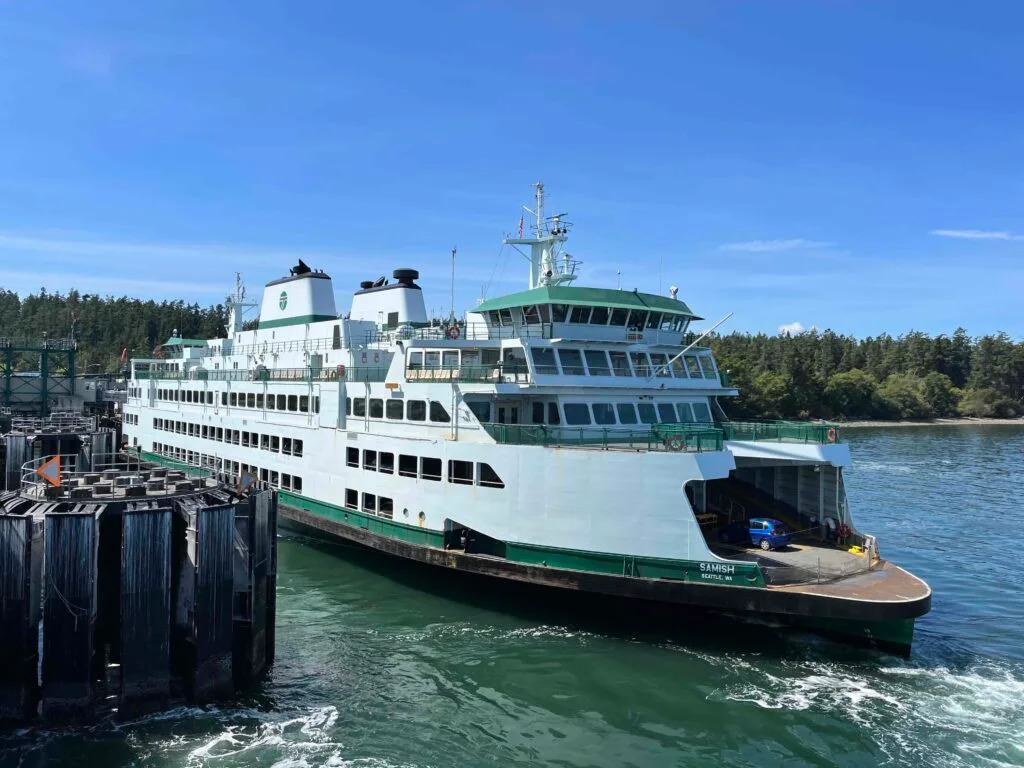
The Washington State Ferries vessel Samish, at the Anacortes ferry terminal. (Bill Lucia/Washington State Standard)
A trip on a Washington state ferry will get more expensive this fall.
The Washington State Transportation Commission on Wednesday approved fare hikes of 3% on Oct. 1 and another 3% on May 1, 2026. It also increased the summer season surcharge to 35% on all routes next year and, on a trial basis, extended the life of multi-ride passes to 120 days starting next May. Those passes now expire after 90 days.
“It is never a fun job to raise rates,” said Commissioner Debbie Young. The final product, she said, is the best they could devise “to keep the impact minimized on the regular rider who feels it most.”
Also Wednesday, commissioners acted to require operators of public and private bus services, as well as vanpool and public rideshare services, to pay tolls on the State Route 520 floating bridge and the Tacoma Narrows Bridge starting Oct. 1.
Commissioners repealed a longstanding exemption for those transit services. A new law signed by Gov. Bob Ferguson earlier this year called for that change. School buses will continue to be exempt.
Redoing ferry fares drew most of the panel’s focus Wednesday.
Under the state transportation budget, Washington State Ferries is required to generate $408.8 million from fares in the next two years to help cover the agency’s day-to-day operating costs. State ferry officials estimated the fare hike will bring in $412.3 million, commissioners were told.
It will come on top of a 50-cent increase to the vessel replacement surcharge that state lawmakers and Ferguson approved this year. When that change takes effect Oct. 1, the surcharge will be $1 per ticket.
Washington State Ferries was also directed to impose a new 3% fee on credit card transactions beginning March 1, 2026.
Ferry officials estimate the vessel surcharge hike will net $23.9 million and the credit card fee another $7.4 million in the 2025-27 budget cycle. But those dollars cannot be applied towards the fare revenue requirement, said Aaron Halbert, a financial analyst for the commission.
Fares differ by route as well as vehicle size, number of passengers and the time of year one travels. A surcharge is assessed on the base fare of a single vehicle between May 1 and Sept. 30, which is the peak season for ridership.
Under the new rates, the standard passenger fare on the Mukilteo-Clinton route will climb 70 cents in October and an additional 15 cents in May 2026. For a standard-sized vehicle, the cost will go up 85 cents this October, and another 30 cents next May.
On the Seattle-Bremerton route, the passenger fare will rise by 80 cents in October 2025 and 30 cents next May. For standard vehicles, the increases are $1.05 this fall and 55 cents in May.
Those amounts include the 50-cent increase in the vessel replacement levy but not the peak season surcharge or the credit card fee, both of which take effect next year. The summer surcharge will climb by 10% to the new level of 35% for all routes, except San Juan routes, which already have a 35% peak season levy.
Even with fare changes, 2.3 million more people are expected to travel on a ferry in this budget cycle compared to the last one. That is a 6% increase in ridership.
One reason is that domestic service is fully restored for the first time since 2019, Halbert said. Another is the governor’s decision to delay hybrid-electric conversions of the largest ferries in the state’s fleet to keep vessels in service.
But ridership is still way below pre-pandemic levels. Roughly 20 million people will travel on a ferry this year compared to 24.7 million in 2018 and 23.9 million in 2019.
During public comment Wednesday, Tom Thiersch, chair of the Ferry Advisory Committee on Tariffs, said the committee agreed with the final proposal.
He voiced frustration that the state continues to demand ferry riders cover a much larger share of the system’s operating costs through fares compared to what is required of users of other public transit services. Continually increasing fares, he said, is “making ferry travel unaffordable for many people “ and is not sustainable.
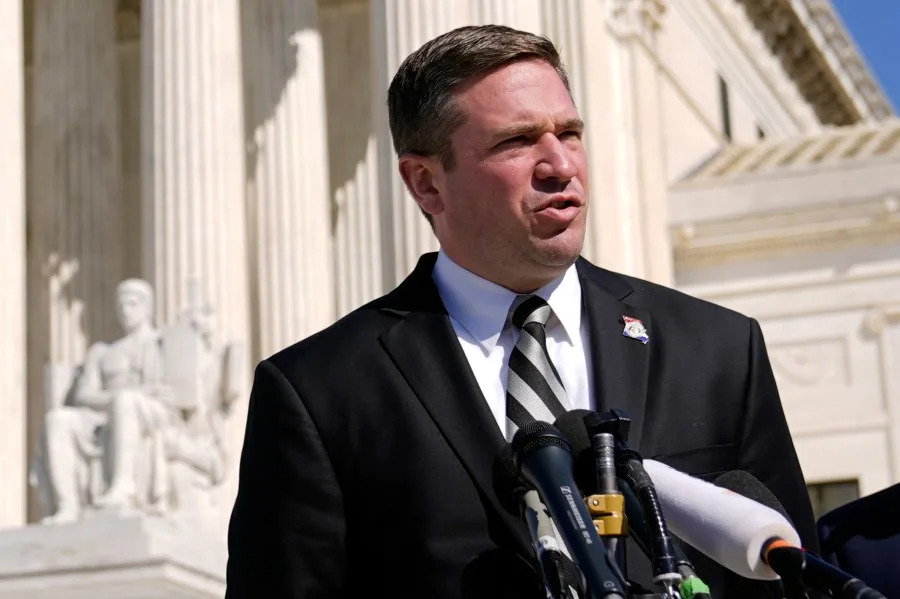

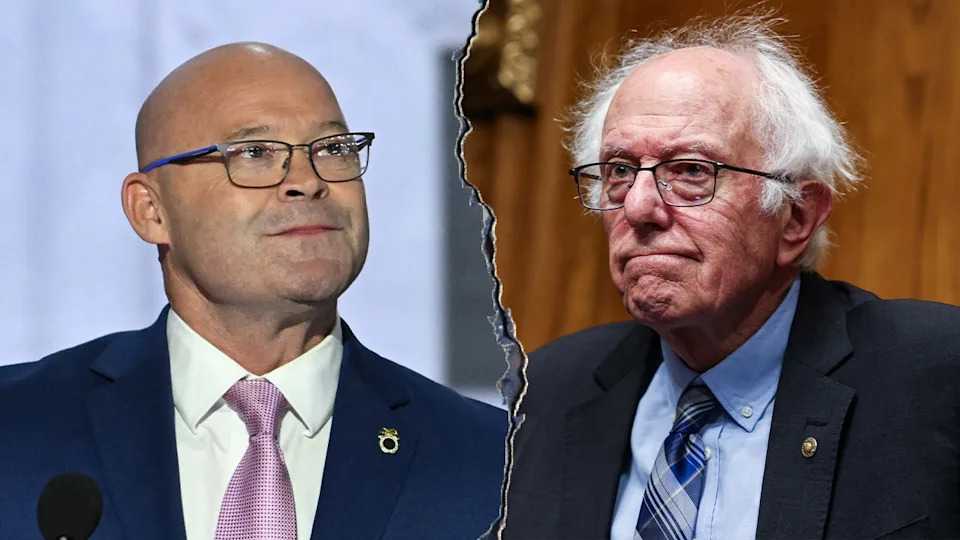
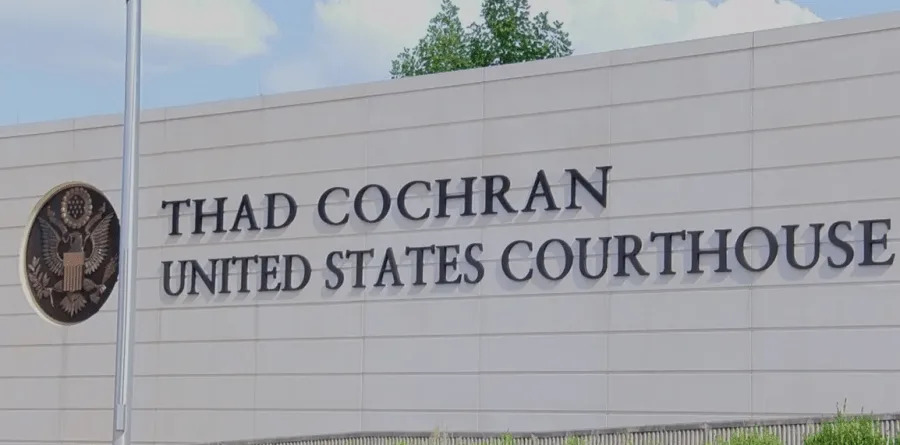

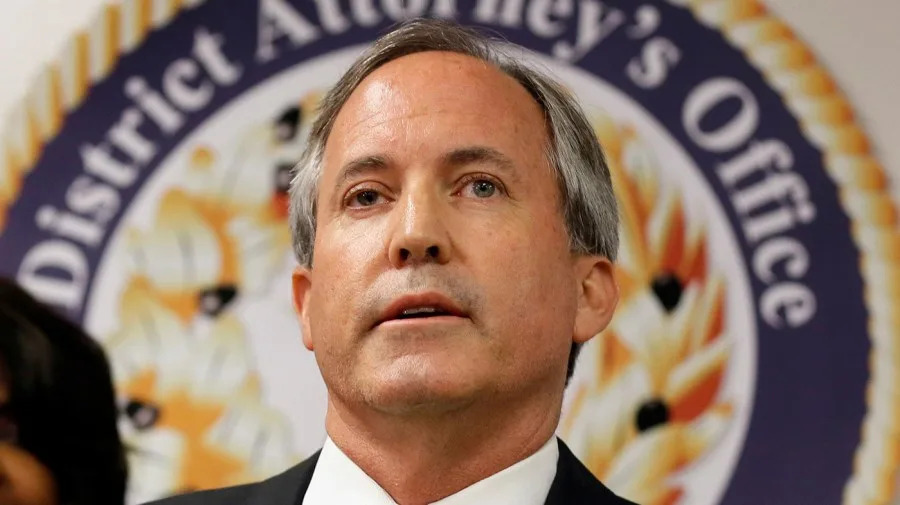
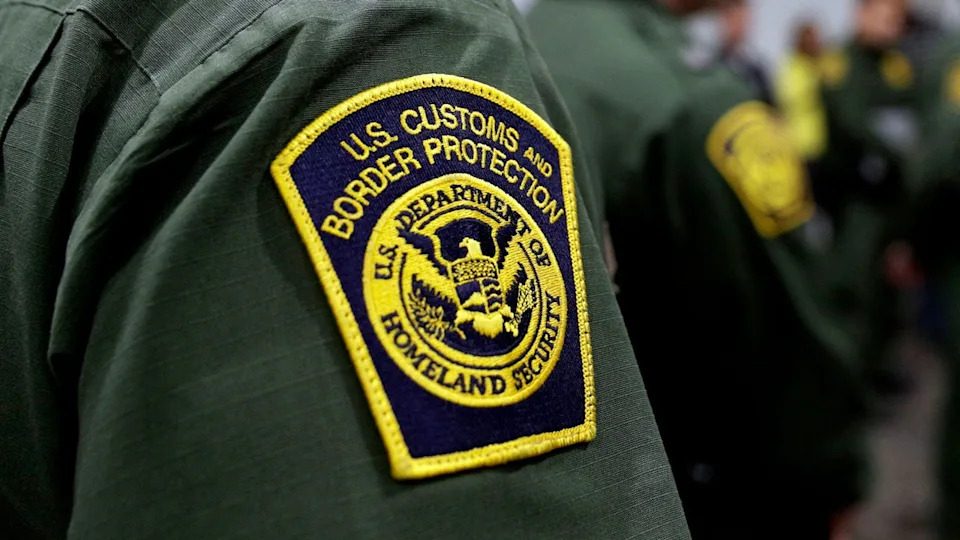

Comments